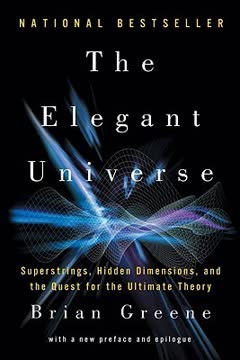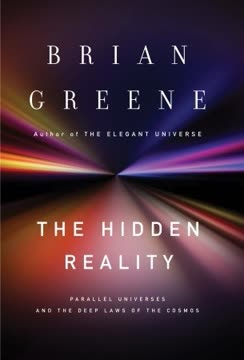Key Takeaways
1. The universe is governed by entropy and evolution
"Entropy is among the more confusing concepts in fundamental physics, a fact that has not diminished the cultural appetite for freely invoking it to describe everyday situations that have evolved from order to chaos or, more simply, from good to bad."
Entropy and evolution are fundamental forces. Entropy, the measure of disorder in a system, tends to increase over time according to the second law of thermodynamics. This principle explains why things naturally move from order to chaos. However, evolution counteracts this trend by creating complex, ordered structures like life.
The entropic two-step allows for order. While the overall entropy of the universe increases, local decreases in entropy are possible through the "entropic two-step":
- A system decreases its internal entropy
- It expels a greater amount of entropy to its surroundings
- This process enables the formation of stars, planets, and life
Evolution builds complexity over time. Through natural selection, evolution favors traits that enhance survival and reproduction. This process has led to the development of increasingly complex organisms and behaviors, including human consciousness and culture.
2. Life emerged from complex molecular interactions
"We are the product of a long lineage that has soothed its existential discomfort by envisioning that we leave a mark."
Life's origins remain mysterious. Scientists have yet to fully explain how life began, but several key factors likely contributed:
- The formation of complex organic molecules
- The development of self-replicating structures
- The emergence of metabolic processes to harness energy
RNA may have been crucial. The "RNA World" hypothesis suggests that RNA molecules, which can both store information and catalyze chemical reactions, may have been the precursors to life:
- RNA can replicate itself
- It can evolve through natural selection
- It may have eventually given rise to DNA and proteins
Life shares common features. All known life forms on Earth:
- Use DNA to store genetic information
- Rely on similar metabolic processes
- Share a common ancestor from billions of years ago
3. Consciousness and free will are products of physical processes
"We are all bags of particles—both mind and body—and the physical facts about the particles can fully address how they interact and behave."
Consciousness emerges from physical processes. While the exact mechanisms are not fully understood, consciousness likely arises from the complex interactions of neurons in the brain. Various theories attempt to explain this phenomenon:
- Integrated Information Theory
- Global Workspace Theory
- Predictive Processing models
Free will is an illusion. Our sense of free will may be a product of our inability to perceive the underlying deterministic processes governing our thoughts and actions:
- Our decisions are influenced by factors outside our conscious awareness
- The feeling of choice may be a useful evolutionary adaptation
- Accepting determinism doesn't negate personal responsibility or the value of human experience
The mind-body problem remains unsolved. The relationship between consciousness and physical matter continues to puzzle philosophers and scientists:
- Dualism vs. materialism
- The hard problem of consciousness
- The explanatory gap between subjective experience and objective brain processes
4. Human creativity and storytelling shape our understanding of reality
"To work and play, to yearn and strive, to long and love, all of it stitching us ever more tightly into the tapestry of the lives we share, and for it all then to be gone—well, to paraphrase Steven Wright, it's enough to scare you half to death. Twice."
Storytelling is a fundamental human trait. Humans have an innate ability and desire to create and share narratives:
- Stories help us make sense of the world
- They allow us to communicate complex ideas and emotions
- Storytelling may have evolutionary advantages for social bonding and information sharing
Art and creativity transcend survival needs. Human creativity goes beyond mere utility:
- It allows us to explore abstract concepts and emotions
- Creative expression may provide a form of symbolic immortality
- Art can offer new perspectives on reality and the human condition
Language shapes our perception of reality. The words and concepts we use influence how we understand and interact with the world:
- Different languages can lead to different ways of thinking
- Metaphors and analogies help us grasp abstract concepts
- Scientific and mathematical languages allow us to describe reality with precision
5. Religion and myth reflect our search for meaning and immortality
"Across cultures and through the ages, we have placed significant value on permanence."
Religion addresses existential concerns. Religious beliefs and practices often serve to:
- Provide explanations for life's mysteries
- Offer comfort in the face of death
- Create a sense of community and shared purpose
Myth and religion share common themes. Across cultures, religious and mythological narratives often include:
- Creation stories
- Explanations of natural phenomena
- Moral guidelines and ethical frameworks
- Concepts of afterlife or transcendence
The psychology of belief. Our tendency to believe in supernatural or religious concepts may have evolutionary roots:
- Agency detection: We're prone to seeing intentional agents behind events
- Pattern recognition: We seek meaning in random occurrences
- Social cohesion: Shared beliefs can strengthen group bonds
6. The future of the universe tends toward disorder and emptiness
"In the fullness of time all that lives will die."
The universe's fate is uncertain. Several possible scenarios for the far future of the universe include:
- Heat death: The universe expands forever, approaching maximum entropy
- Big Crunch: The universe collapses back in on itself
- Big Rip: Accelerating expansion tears apart all matter
Structures will gradually decay. Over extremely long timescales:
- Stars will burn out
- Galaxies will disperse
- Black holes will evaporate through Hawking radiation
- Even protons may decay, leaving a universe of elementary particles
Life and thought face challenges. The ability of life and conscious thought to persist in the far future is limited by:
- Decreasing availability of usable energy
- Increasing entropy of the universe
- Potential instabilities in fundamental physical constants
7. Quantum mechanics allows for bizarre possibilities in the far future
"Quantum mechanics is a particular sort of starry-eyed dreamer, allowing for a vast collection of possible futures while grounding its madcap vision by specifying the likelihood of any given outcome."
Quantum fluctuations can lead to unlikely events. Given enough time, quantum mechanics allows for extremely improbable occurrences:
- Spontaneous formation of complex structures (Boltzmann brains)
- Tunneling of the universe to a different state
- Temporary reversals of entropy increase
The multiverse concept. Some interpretations of quantum mechanics and cosmology suggest the existence of multiple universes:
- Many-worlds interpretation: Every possible quantum outcome occurs in a separate universe
- Eternal inflation: Our observable universe may be one of many "bubble universes"
The nature of time and eternity. Quantum mechanics raises profound questions about the nature of time and the possibility of eternal existence:
- Is time fundamental or emergent?
- Can information persist eternally?
- How does quantum indeterminacy affect our understanding of past and future?
Human-written content ends here.
Last updated:
FAQ
What's Until the End of Time about?
- Exploration of Existence: Brian Greene's book delves into fundamental questions about existence, time, and the universe, examining how life and consciousness emerge from the laws of physics.
- Interconnected Themes: It weaves together cosmology, physics, and human experience, exploring how these disciplines inform our understanding of meaning and purpose.
- Journey Through Time: The narrative spans from the origins of the universe to the eventual fate of all matter, emphasizing the transient nature of existence.
Why should I read Until the End of Time?
- Insightful Perspective: Greene offers a unique perspective on the intersection of science and philosophy, making complex concepts accessible to a general audience.
- Engaging Storytelling: The book captivates readers with a narrative style that blends scientific rigor with personal reflection and storytelling.
- Broad Appeal: It provides valuable insights for both science enthusiasts and those curious about the meaning of life, resonating across disciplines.
What are the key takeaways of Until the End of Time?
- Transience of Existence: The book emphasizes the impermanence of life and the universe, highlighting that "in the fullness of time all that lives will die."
- Role of Entropy: Greene discusses how entropy drives the universe toward disorder while facilitating the emergence of complex structures, including life.
- Unity of Life: The author illustrates that all life shares a common ancestry and operates under similar biochemical principles, reinforcing interconnectedness.
What are the best quotes from Until the End of Time and what do they mean?
- “In the fullness of time all that lives will die.”: This quote encapsulates the book's central theme of mortality and the transient nature of existence.
- “We are the product of a long lineage that has soothed its existential discomfort by envisioning that we leave a mark.”: Greene reflects on humanity's desire for permanence and legacy in the face of inevitable decay.
- “Life is physics orchestrated.”: This statement underscores the idea that the processes of life are fundamentally rooted in physical laws, bridging science and the essence of living.
How does Brian Greene explain the concept of entropy in Until the End of Time?
- Entropy as Disorder: Greene describes entropy as a measure of disorder in a system, stating that "over time there is an overwhelming tendency of entropy to increase."
- Entropic Two-Step: He introduces the "entropic two-step," where localized decreases in entropy (like star formation) are offset by greater increases in the surrounding environment.
- Role in Life: The author argues that life itself manages entropy, extracting energy from the environment to maintain order and complexity.
How does Until the End of Time address the concept of consciousness?
- Consciousness as a Physical Phenomenon: Greene argues that consciousness arises from complex arrangements of particles and their interactions, rooted in physical reality.
- The Hard Problem of Consciousness: The book engages with philosophical questions about how subjective experiences emerge from objective processes.
- Evolution of Thought: Greene explores the evolutionary basis for consciousness, suggesting it provides survival advantages and is a product of natural selection.
What is the relationship between consciousness and quantum physics in Until the End of Time?
- Quantum Mechanics as Foundation: Greene acknowledges that quantum mechanics underpins the physical basis of everything, including consciousness.
- Quantum Measurement Problem: He discusses how reality transitions from probabilistic states to definite outcomes, arguing that consciousness is unlikely to play a special role.
- Skepticism of Quantum Consciousness Links: Greene expresses skepticism about claims that consciousness is fundamentally linked to quantum mechanics.
How does Brian Greene envision the future of the universe in Until the End of Time?
- Cosmic Timeline: Greene outlines a vision of the universe's future, suggesting it will ultimately lead to a state of increased entropy and disorder.
- Role of Dark Energy: He explains how dark energy may lead to scenarios like the "big rip," where the universe could be torn apart by accelerating expansion.
- Long-Term Survival of Life: Greene speculates on the potential for life to adapt and persist in the far future, even as conditions change dramatically.
What role does art play in Until the End of Time?
- Art as Expression of Humanity: Greene argues that art is fundamental to human experience, allowing exploration and communication of complex emotions and ideas.
- Art and Social Cohesion: He suggests that shared artistic experiences foster social bonds and enhance group cohesion.
- Creativity and Innovation: Greene highlights the importance of creativity in driving innovation and problem-solving, cultivating a flexible mindset.
How does Until the End of Time explore the future of the universe?
- Cosmological Scenarios: Greene outlines theories about the universe's fate, including heat death and cyclical models, suggesting a bleak future for consciousness.
- Boltzmann Brains: The book introduces hypothetical self-aware entities that could arise in a high-entropy universe, discussing their implications for reality.
- Eternal Recurrence: Greene touches on the idea of eternal recurrence, where particle configurations may repeat over vast timescales, raising questions about identity.
What is the significance of the title Until the End of Time?
- Temporal Exploration: The title reflects Greene's exploration of time, both in terms of the universe's history and its future.
- Human Experience: It evokes the human desire to understand our place in the universe and the significance of our existence.
- Philosophical Inquiry: The title invites readers to engage with profound questions about life, consciousness, and the nature of reality.
What are the philosophical implications of Until the End of Time?
- Existential Reflection: Greene encourages readers to contemplate their existence within the vast timeline of the universe.
- Interconnectedness of Science and Philosophy: The book illustrates how scientific discoveries inform philosophical inquiries about meaning and existence.
- Legacy and Memory: Greene discusses the importance of legacy and the desire for continuity in human experience, emphasizing the value of our contributions.
Review Summary
Until the End of Time explores the universe's history and future, delving into physics, consciousness, and philosophy. Reviews praise Greene's accessible writing and fascinating ideas, though some found the philosophical sections less compelling than the scientific ones. Readers appreciated Greene's awe-inspiring perspective on existence and meaning, but some felt the book lacked focus or relied too heavily on reductionism. Overall, the book offers a thought-provoking journey through cosmic time, blending science and humanistic inquiry to contemplate life's ultimate questions.
Similar Books

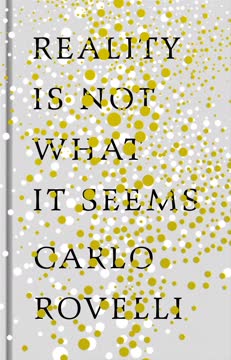
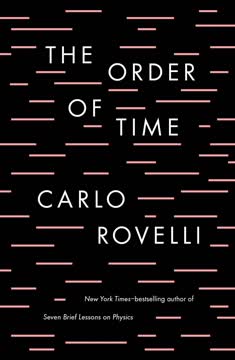

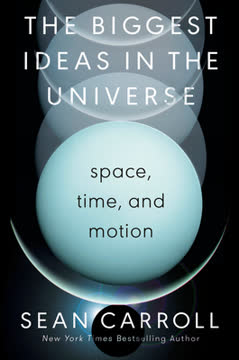
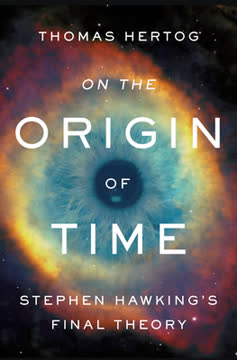
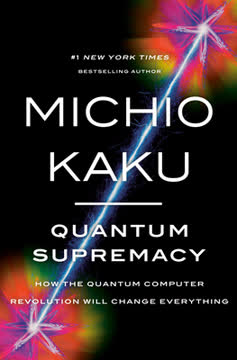
Download PDF
Download EPUB
.epub digital book format is ideal for reading ebooks on phones, tablets, and e-readers.

